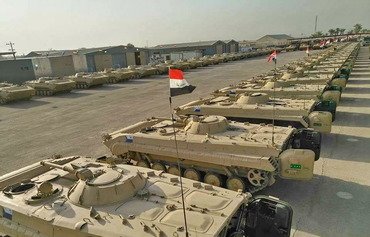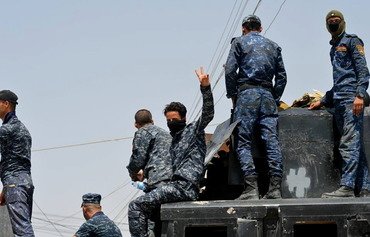Has the "Islamic State of Iraq and Syria" (ISIS) met its end in Iraq?
Though the group still has a presence in small areas of the country, from a structural or organisational standpoint, the answer is yes, Iraqi analysts say.
To back up this assertion, they point to the key evidence: the mysterious disappearance of ISIS leader Abu Bakr al-Baghdadi, whose fate is unknown to even the group’s commanders.
The clearest indicator of the group’s demise, however, is the fierce infighting taking place, fueled by mutual distrust and accusations of betrayal and laxity.
According to current estimates, 7,000 ISIS elements remain on the ground in the few areas the group still controls in the north and west of the country.
They are no longer the diehard fighters they once were, said Sheikh Awad Saeed al-Jughaifi, commander of the tribal forces in Haditha, who describes ISIS fighters as "dazed and confused".
There are an estimated 1,500 ISIS elements in the Upper Euphrates region, he said, some of whom fled Mosul and Tal Afar for al-Qaim to seek refuge or escape to Syria.
"Our information indicates that confusion and chaos are rampant in the terrorists’ ranks there, and they are in a state of extreme fear and trepidation," he told Diyaruna.
Recent defeats the group has suffered and the resulting material and human losses are what led to this collapse, he said, noting that "al-Baghdadi’s disappearance" also has been a significant factor.
Rank-and-file ISIS elements and their commanders do not know whether their leader is dead or alive, and if he is alive, they wonder why he has remained silent in the face of the problems they are suffering, al-Jughaifi said.
Meanwhile, many of the group's leaders in western Anbar have disappeared from sight, along with their families, he added.
"It has become difficult to ascertain whether ISIS still exists, structurally or organisationally speaking, given the crises wracking it and contraction of the territory it once controlled by close to 90%," he said.
The lightning-fast victory achieved by Iraqi forces in the battle to liberate Tal Afar and the killing and surrender of numerous fighters shows the realistic possibility of the group’s demise, al-Jughaifi said.
'The curtain has fallen on ISIS'
In effect, the Tal Afar battle "has brought the curtain down on the group", said Iraqi MP Majed al-Gharawi, who serves on the parliamentary security committee.
"The leaders and members of that group have now either died or surrendered, and those who remain in the yet-to-be-liberated territories suffer from morale collapse and are as good as dead," he told Diyaruna.
The group’s structure has been shaken by the loss of those described as its elite members and ideologues, he added, noting that now more than ever, it is wracked by internal divisions and conflicts.
"This has been confirmed by reports from intelligence sources that the group is liquidating its members on various charges, notably treason, communicating with intelligence services and providing them with secret information, nonfeasance and failure to show resilience in battle," al-Gharawi added.
He warned of the threat posed by ISIS’s secret networks, however, "as this may be the only weapon it has left".
"This is a task for our intelligence agencies, and we have confidence in their ability to fend off this threat," he added.
Al-Gharawi also called for strengthening efforts to root out extremist ideology and prevent militants from establishing incubators in the liberated areas.
Dismantling administrative apparatus
Another sign of the imminent demise of ISIS is the abolition and dismantling of its administrative apparatus in areas that were once under its control in Iraq, security expert Fadel Abu Raghif told Diyaruna.
The group refers to these administrative areas as ‘wilayaat’ (provinces).
Several of these wilayaat, such as Ninawa, Salaheddine and Fallujah, have ceased to exist since the ISIS elements in them were eliminated, Abu Raghif said.
"Now, wilayat al-Furat (Euphrates province), that includes border areas between Iraq and Syria, is the most important for the group, which now refers to it as ard al-Tamkeen (land of empowerment)," Abu Raghif said.
"And even that wilayat is on the brink of collapse, and its demise is inevitable."
The crises also have forced the group to abolish many entities in its organisational structure known as dawaween (plural of diwan or bureau).
These include diwan al-rakaz, which administers natural resources such as oil and natural gas, diwan al-ghanaem (spoils of war bureau), and diwan al-Elam (media or information bureau), which is effectively defunct, Abu Raghif said.

![Iraqi forces are seen arresting 'Islamic State of Iraq and Syria' elements who fled the battle for Tal Afar in a photograph posted online on August 29th. [Photo from the Western Tigris Media Network Facebook page]](/cnmi_di/images/2017/09/27/9635-ISIS-elements-arrested-600_384.jpg)






